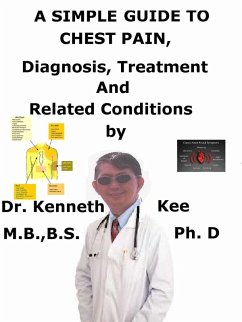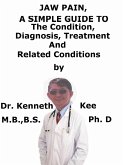The fastest way to get attention in the ER is to utter the words, chest pain!.
Chest pain is one of the main reasons people go to the emergency department of a hospital.
There may be a dull aching sensation, pressure across the chest, sharp, or stabbing pain.
Occasionally chest pain feels crushing or burning.
In some patients, the pain travels up the neck, into the jaw, and then extends to the back or down one or both arms.
Chest pain can be caused by a number of factors ranging from serious heart-related disorders to causes that are not as life-threatening.
Only 13 % of visits to the emergency department for chest pain are due to a heart-related disorder.
New Guideline for Chest Pain:
Chest pain means more than pain in the chest.
High-sensitivity troponins are preferred.
Early care is needed for acute symptoms.
Testing is not needed routinely in low-risk patients.
Women may be more likely to present with other symptoms (nausea, shortness of breath).
Identify patients most likely to benefit from further testing.
Non-cardiac is in, atypical is out.
Knowledge of heart-related causes of chest pain is important for an accurate diagnosis and treatment plan.
A. Heart-related causes
Heart attack
A heart attack can result from blockage of blood flow, often from a blood clot, to the heart muscle.
The blood supply that provides the heart with oxygen can be disconnected, causing heart tissues and muscles to start dying.
Angina
Angina is the chest pain symptom produced by poor blood flow to the heart.
This manifests as a crushing pain in the middle of the chest.
Aortic dissection
If the inner layers of aorta separate, blood is compelled to move between the layers and can induce the aorta to rupture.
Chest pain may be the first sign of this disorder
Inflammation of the sac around the heart (pericarditis)
This heart disorder normally produces sharp pain that becomes worse when breathing in or lying down.
Pericarditis is manifested by sharp chest pains that become worse with deep breathing.
B. Digestive causes
Heartburn
This painful, burning sensation behind the sternum happens when stomach acid refluxes up from the stomach into the esophagus
C. Muscle and bone causes
Costochondritis
The cartilage of the rib cage, mainly the cartilage that joins the ribs to the breastbone, becomes inflamed and painful to movement, breathing and palpation.
Sore muscles
Chronic pain syndromes, such as fibromyalgia, can induce constant muscle-related chest pain.
Injured ribs
A bruised or broken rib due to injury can produce chest pain.
D. Lung-related causes
Blood clot in the lung (pulmonary embolism)
A blood clot that is blocked in a lung artery can obstruct blood flow to lung tissue.
Pulmonary embolism is a serious disorder needing instant treatment and chest pain is a frequent symptom.
Collapsed lung (Pneumothorax)
The chest pain linked with a collapsed lung normally starts suddenly and can persist for hours and is normally linked with shortness of breath.
Shingles
Produced by a reactivation of the chickenpox virus, shingles can cause pain in the chest wall nerve and form a band of blisters from the back around to the chest wall.
The most life-threatening disorders involve the heart or lungs.
Chest pain does not always suggest a heart attack but heart and lung disease should be excluded first with an ECG and Chest X-ray..
TABLE OF CONTENT
Introduction
Chapter 1 Chest Pain
Chapter 2 Myocardial Infarction
Chapter 3 Aortic Dissection
Chapter 4 Pericarditis
Chapter 5 Blood Clot in Lungs
Chapter 6 Pneumothorax
Ch...
Dieser Download kann aus rechtlichen Gründen nur mit Rechnungsadresse in A, B, CY, CZ, D, DK, EW, E, FIN, F, GR, H, IRL, I, LT, L, LR, M, NL, PL, P, R, S, SLO, SK ausgeliefert werden.









